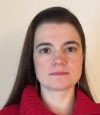My goal and longstanding interest as an academic instructor is to teach biology with an emphasis on the use of computation in biology. This goal is inseparable from my desire and enthusiasm for creating and organizing safe learning environments in which students take ownership of their learning, recognize their strengths and expose/acknowledge the areas that they need to improve. I am excited to create such safe educational spaces and communities by connecting to a diverse student population based on my and their experiences.
I have pursued innovative approaches to teaching science throughout my career and was accepted into the highly competitive INSPIRE/IRACDA research/teaching postdoctoral program. I developed an individual curriculum development project as part of a teaching certificate through Storrs Campus, UCONN and the summer program of BioQuest Curriculuam Consortium. As a participant and organizer of the Cultivating Ensembles in STEM Education and Research conference, I regularly work with professionals across STEM who are transforming the classrooms and practices of researchers. Through professional development workshops such as Leading Improvisational Learning Environments by the East Side Institute, I was able to deepen my pedagogical understanding and practice in improvisational skills. I will participate in future workshops and will keep working on my skills during the in-class teaching opportunities.
A safe learning environment is an inclusive and supportive group setting that is created and fostered by a teacher. The main objective is to encourage exploration and wondering, stimulate creativity, risk taking and collaboration between students and a teacher. In a safe learning environment, students are not afraid of voicing their opinion and are viewed as co-creators of their own learning. As a result, an educator builds a growth mindset on the individual as well as on the group level. With the challenge of creating a safe learning environment, comes a huge reward and opportunity for a teacher to provide students with a life-lasting and transformational education. I use different playful exercises where students are not judged or evaluated. These activities also build and strengthen teacher-student and student-student conversations. … . It is especially important to establish a safe learning space for teaching applications of math in biology.
I am particularly excited about bringing my expertise and skills in computational biology research and teaching computational thinking to students who are studying biology and life sciences. I aspire to continue growing and developing as an educator-researcher in this area of research and pedagogy. Math causes anxiety and fear for biology and health sciences students and more so for certain student populations. Some feel that they do not belong or were not meant for this career path or experience. Therefore, it is challenging and therefore especially interesting to develop non-intimidating educational approaches that would empower students to break out of this stigma.
When working on solving biological problem using modeling, I invite students to think of themselves as a team of scientists who are working on a project and will be writing a scientific paper (lab report). An important process that I teach is translating biology into an abstract language of a concept map, cartoon or a diagram. It is a creative and collaborative activity that students enjoy; I ask some of them to share their diagrams so that we can together discuss and relate to the thinking involved in formulating the model. This step helps students understand how a mathematical equation/model is generated and related to biology and what part of the equation changes if biology changes.
One of the many aspects that makes computation in biology exciting for students is the use of technology. They are enthusiastic to learn and play with new software. Excel is a widely accessible off-the-shelf program and is a powerful learning tool for students to create and experiment with simulations of mathematical models. Excel-based models allow users to change variables and observe results in numerical, graphical or equation form. Students can easily adopt and modify the models that I created for them.
As a woman in STEM, as a former student who worked while in school, as an immigrant transfer student who took classes with minimal English, I can relate to experiences and hardships of some underrepresented groups in science. As IRACDA fellow, I have unique and valuable opportunity to teach and mentor minority students at our partner schools. As someone who is sensitive to injustice and believes that science is accessible to everyone, I will strive to serve a diverse student population in my classroom. My approach goes back to establishing and facilitating a safe learning space where students are not afraid to take risks which offers a sense of community to the students of various backgrounds. Initially disadvantaged students perform better and more prepared students are more interested in supporting everyone’s success. This is a truly transformational and rewarding process for me as an educator where I co-create the learning environment with my students.
